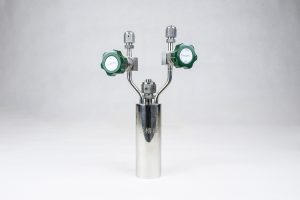Introduction
Magnesocene, scientifically known as Cp2Mg, stands as a pivotal compound in organic synthesis, particularly as a precursor in the formation of Grignard reagents. However, the efficiency and reliability of its application heavily rely on its purity. Understanding and determining the purity of Magnesocene is thus imperative for ensuring the success of organic synthesis processes. In this comprehensive exploration, we delve into the analytical techniques employed to assess the purity of Magnesocene, the typical impurities encountered, and their consequential effects.

Analytical Techniques for Purity Determination
- Nuclear Magnetic Resonance (NMR) Spectroscopy
NMR spectroscopy serves as a cornerstone in the determination of Magnesocene purity. Its principle relies on the magnetic properties of certain atomic nuclei, providing detailed structural information about molecules. In the case of Magnesocene, NMR spectroscopy facilitates the identification and quantification of impurities by analyzing characteristic peaks in the spectrum. By comparing the obtained spectrum with reference standards, the purity of Magnesocene can be accurately assessed.
- Gas Chromatography (GC)
Gas chromatography is another indispensable tool for evaluating the purity of Magnesocene. This technique involves the separation of compounds based on their vapor pressure and affinity for the stationary phase within a chromatographic column. Impurities present in Magnesocene can be detected and quantified by comparing their retention times with those of known standards. GC analysis offers high sensitivity and precision, making it suitable for detecting trace impurities.
- Elemental Analysis
Elemental analysis provides valuable insights into the elemental composition of Magnesocene and the presence of impurities. By subjecting the compound to techniques such as combustion analysis or inductively coupled plasma-optical emission spectroscopy (ICP-OES), the content of carbon, hydrogen, magnesium, and other elements can be determined. Deviations from the expected stoichiometry indicate the presence of impurities, allowing for their identification and quantification.
- High-Performance Liquid Chromatography (HPLC)
HPLC offers a versatile platform for assessing the purity of Magnesocene. This technique involves the separation of compounds based on their interaction with a liquid mobile phase and a solid stationary phase. By employing suitable detectors such as UV-Vis or refractive index detectors, impurities in Magnesocene can be detected and quantified. HPLC analysis enables rapid and efficient assessment of purity, making it a valuable tool in quality control.
Factors Affecting Purity Determination
- Sample Preparation
Proper sample preparation is crucial for accurate purity determination. The sample must be representative and free from contaminants that could skew the results. Techniques such as recrystallization or solvent extraction may be employed to purify the Magnesocene sample prior to analysis.
- Instrument Calibration
Calibration of analytical instruments is essential to ensure the accuracy and reliability of purity determination. Calibration standards of known purity are used to establish the relationship between instrument response and analyte concentration. Regular calibration checks and adjustments are necessary to maintain the integrity of the analytical data.
- Interferences and Limitations
Despite their efficacy, analytical techniques for purity determination may encounter interferences and limitations. Interfering compounds with similar properties to Magnesocene may co-elute or interfere with the analysis, leading to inaccuracies. Additionally, instrumental limitations such as detection limits and matrix effects must be considered when interpreting results.
Typical Impurities in Magnesocene and Their Effects
- Common Impurities
Magnesocene may contain various impurities, including magnesium hydride (MgH2) and magnesium oxide (MgO). These impurities can arise from synthesis, handling, or storage conditions and may adversely affect the performance of Magnesocene in organic synthesis reactions.
- Effects of Impurities on Reactivity and Yield
Impurities in Magnesocene can impact its reactivity and yield in organic synthesis reactions. For example, magnesium hydride impurities may react with protic solvents, leading to side reactions and reduced yields. Similarly, magnesium oxide impurities can hinder the formation of Grignard reagents and compromise the overall success of the synthesis.
Conclusion
In conclusion, the purity of Magnesocene (Cp2Mg) plays a critical role in determining its suitability for organic synthesis applications. Analytical techniques such as NMR spectroscopy, GC, elemental analysis, and HPLC provide valuable insights into the purity of Magnesocene and the presence of impurities. By understanding the factors affecting purity determination and the effects of impurities on reactivity and yield, researchers can ensure the quality and reliability of Magnesocene for use in organic synthesis.


